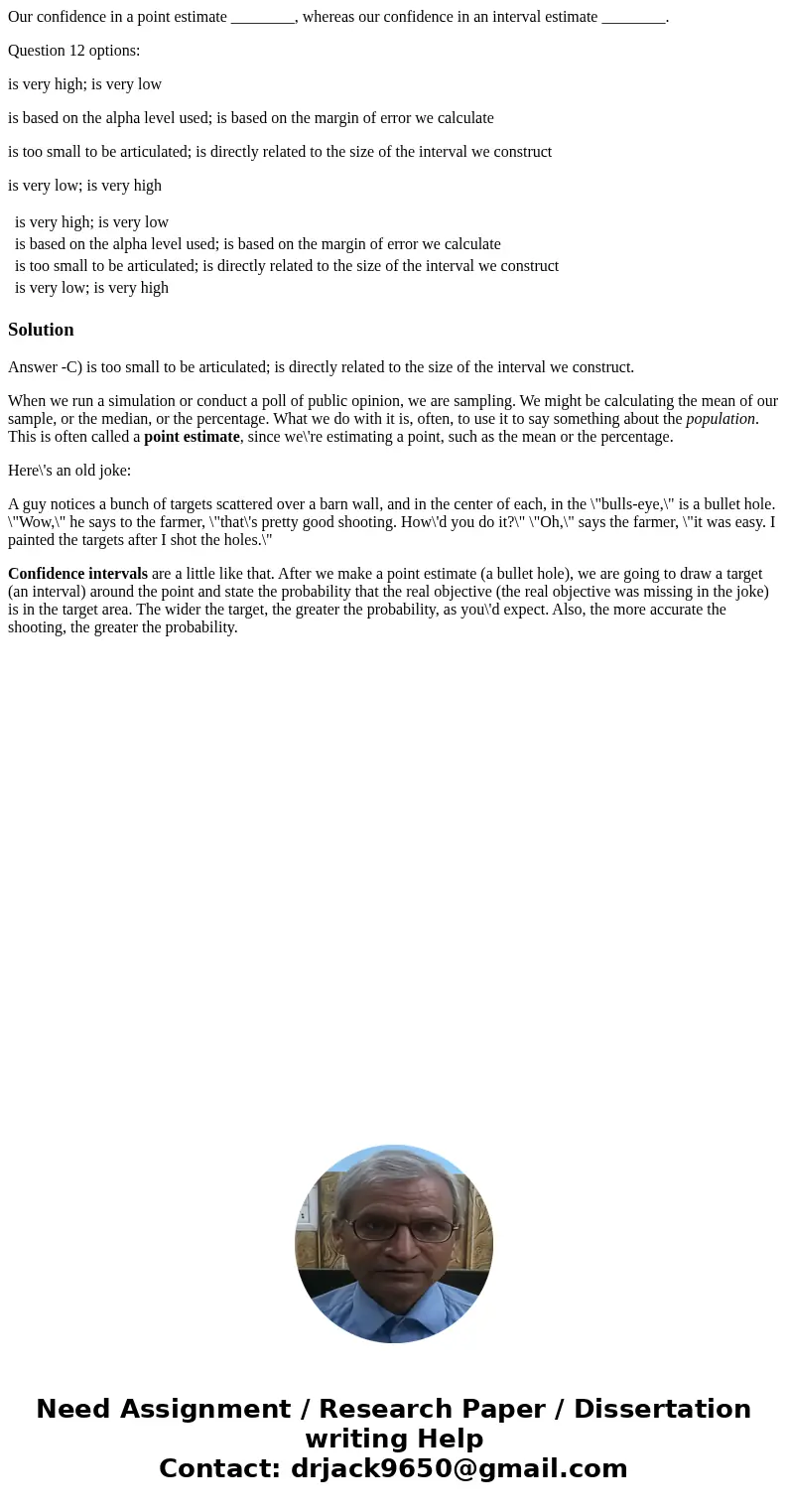Our confidence in a point estimate whereas our confidence i
Our confidence in a point estimate ________, whereas our confidence in an interval estimate ________.
Question 12 options:
is very high; is very low
is based on the alpha level used; is based on the margin of error we calculate
is too small to be articulated; is directly related to the size of the interval we construct
is very low; is very high
| is very high; is very low | |
| is based on the alpha level used; is based on the margin of error we calculate | |
| is too small to be articulated; is directly related to the size of the interval we construct | |
| is very low; is very high |
Solution
Answer -C) is too small to be articulated; is directly related to the size of the interval we construct.
When we run a simulation or conduct a poll of public opinion, we are sampling. We might be calculating the mean of our sample, or the median, or the percentage. What we do with it is, often, to use it to say something about the population. This is often called a point estimate, since we\'re estimating a point, such as the mean or the percentage.
Here\'s an old joke:
A guy notices a bunch of targets scattered over a barn wall, and in the center of each, in the \"bulls-eye,\" is a bullet hole. \"Wow,\" he says to the farmer, \"that\'s pretty good shooting. How\'d you do it?\" \"Oh,\" says the farmer, \"it was easy. I painted the targets after I shot the holes.\"
Confidence intervals are a little like that. After we make a point estimate (a bullet hole), we are going to draw a target (an interval) around the point and state the probability that the real objective (the real objective was missing in the joke) is in the target area. The wider the target, the greater the probability, as you\'d expect. Also, the more accurate the shooting, the greater the probability.

 Homework Sourse
Homework Sourse